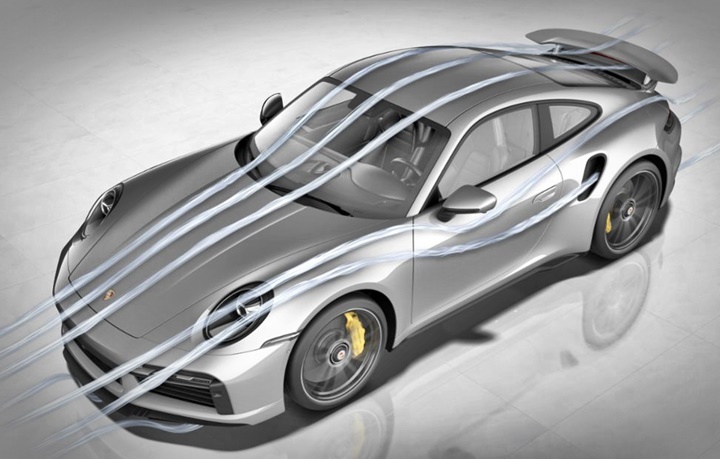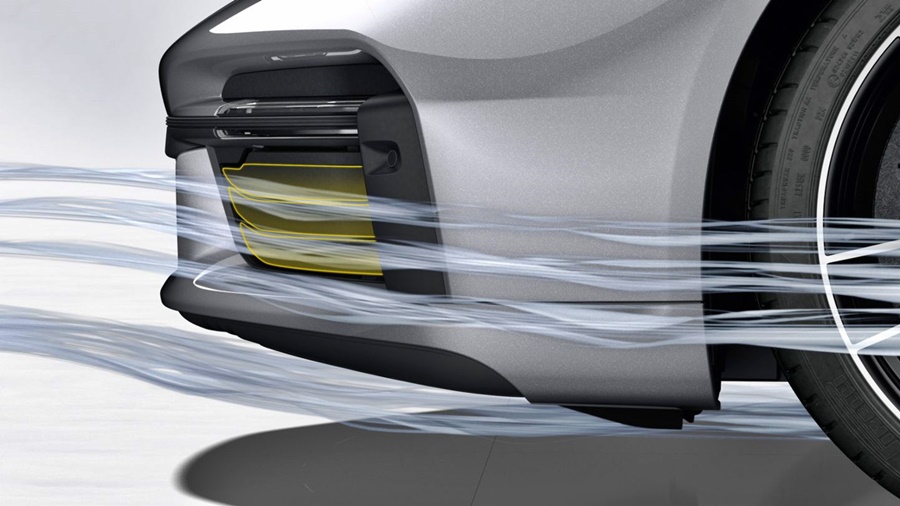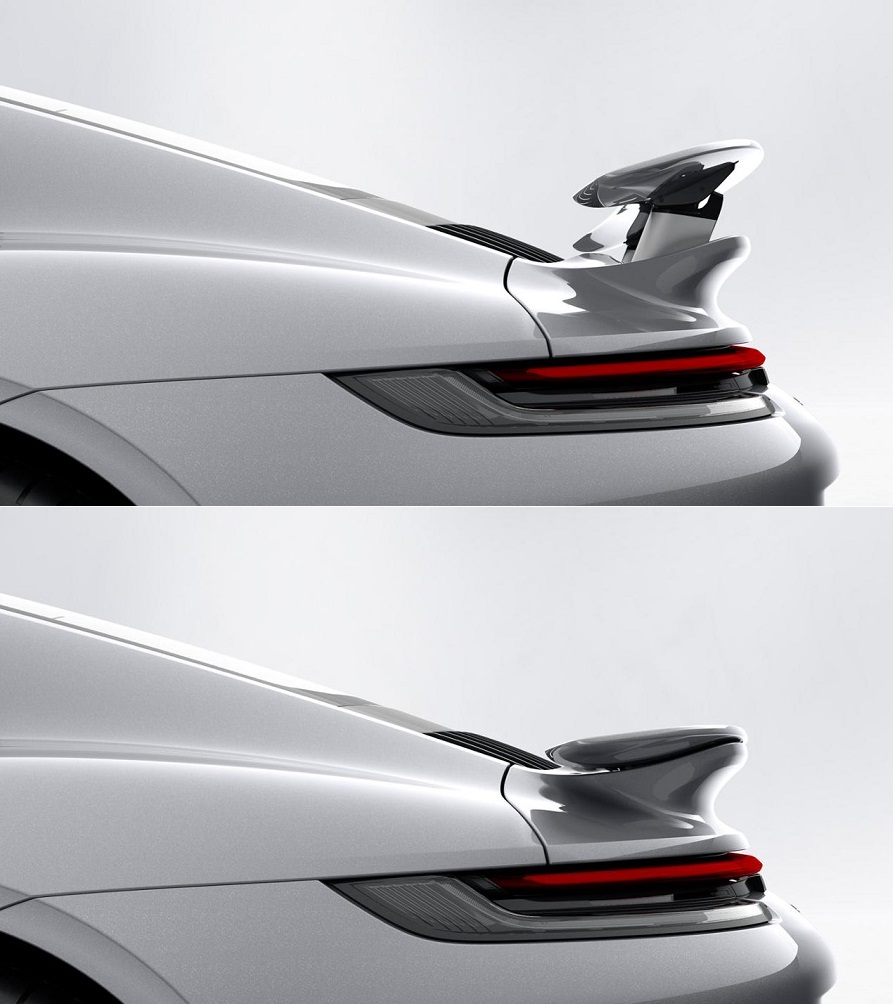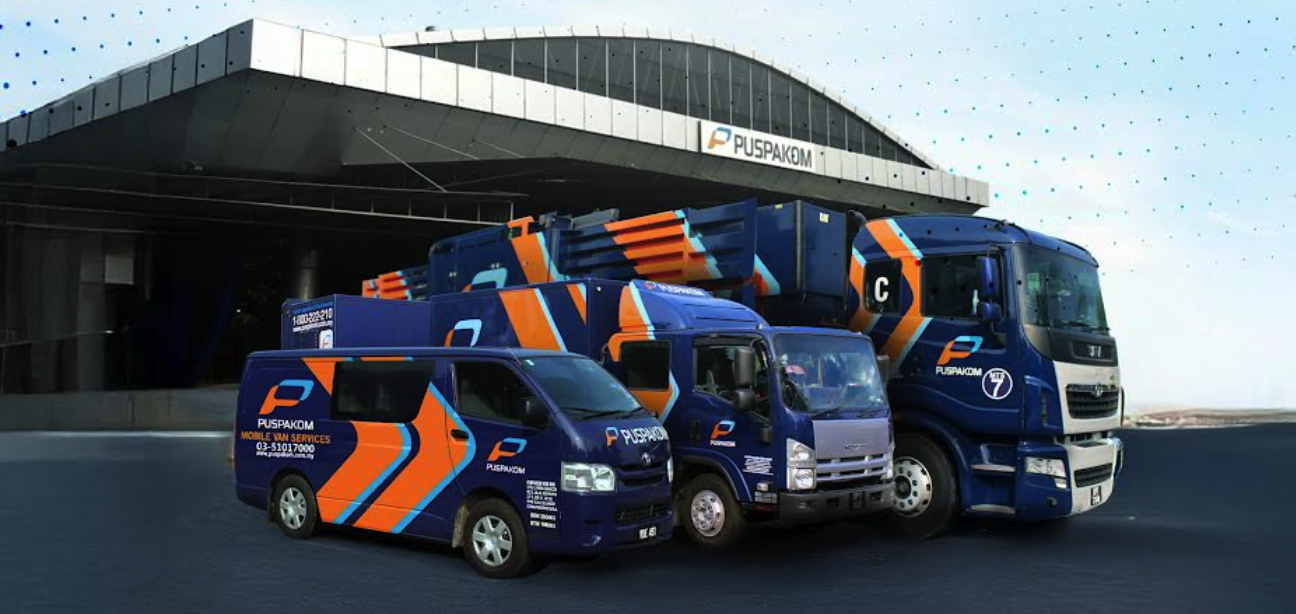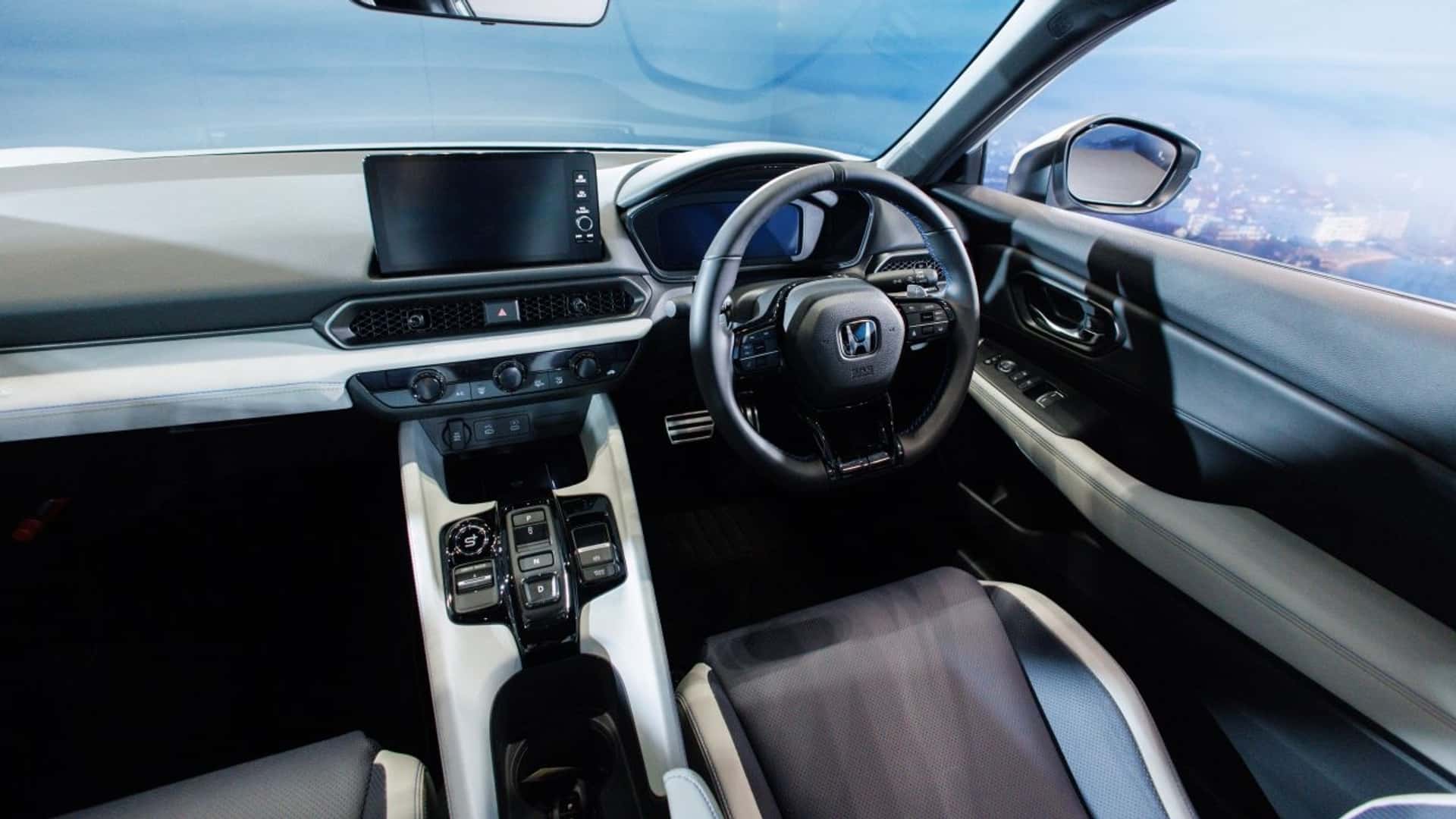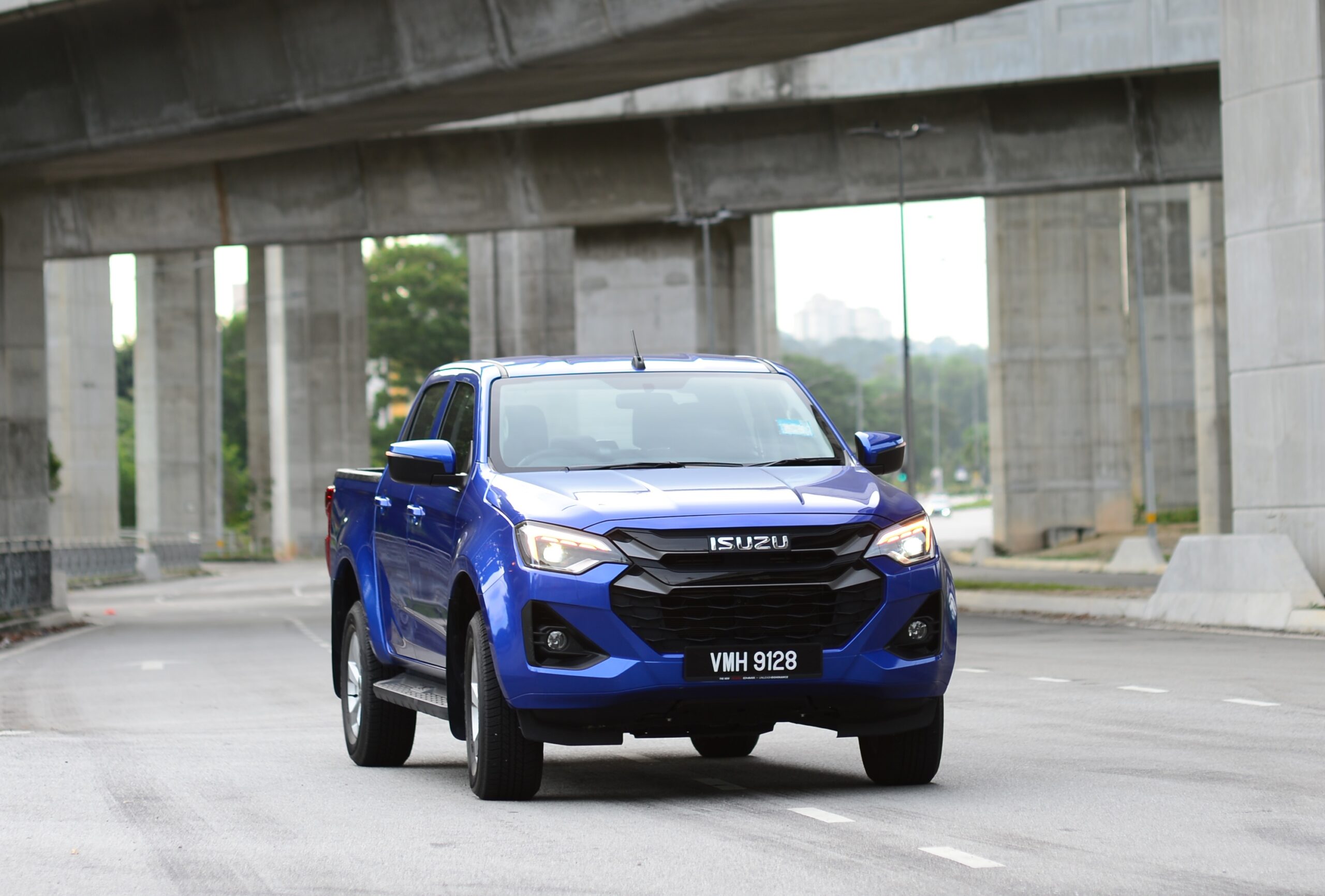Aerodynamics play a very important role in a car’s performance, especially for high-performance cars. Where efficient aerodynamics will help a car improve its fuel efficiency, for high-performance cars, it also enhances stability and makes the car safer to driver at the very high speeds it is capable of.
Porsche has continuously improved the aerodynamics of its 911 model from generation to generation, often coming up with innovations that set new standards. For the latest 911 Turbo S, the aerodynamic characteristics of the car can be even more precisely adapted to the driving situation, speed and selected driving mode.
Active aerodynamic elements
Porsche Active Aerodynamics (PAA) features active aerodynamic elements that resolve the conflicts between different aerodynamic goals. The comprehensive expansion of the intelligent system in the 911 Turbo S makes it possible to achieve a much larger spread between the aerodynamic configurations for optimum driving dynamics and minimum drag.
The active cooling air flaps are new. together with the variable front spoiler lip as well as the extending and tilting rear wing, the new top-of-the-range model therefore features three active aerodynamic components. On top of the basic aerodynamic configurations of the 911 Turbo, namely PAA Speed and PAA Performance, this now permits realisation of an Eco configuration.
PAA has also been extended to include a Wet Mode function, which moves the aerodynamic balance towards the rear axle for greater driving stability in wet road conditions, as well as the airbrake function, which produces higher drag and greater downforce in the event of full braking at high speed and therefore results in a shorter braking distance and greater driving stability.
Adaptation to the changed airflow around the car also occurs when the sliding roof or convertible top is open. This means that there are a total of 8 different aerodynamic configurations, which are each described by a specific combination of the active aerodynamic components.
Improvements have not just been made in adaptation to the specific requirements in driving operation but also as regards the aerodynamic properties themselves: the newly designed active front spoiler and rear wing have increased the downforce by 15% to guarantee enhanced driving stability and dynamics at higher speeds.
The maximum downforce in the Performance position (Sport Plus mode activated) is now around 170 kgs. The drag coefficient (Cd) of the 911 Turbo S varies depending on the aerodynamic setting. The most efficient configuration has a minimum value of 0.33 Cd achieved with closed flaps and retracted front and rear spoilers.
The cooling air flaps
The newly developed controlled cooling air flaps permit a lower driving resistance and thus reduced fuel consumption. The flaps are located in the right and left air intakes of the front apron. They are continuously adjustable and control the cooling air throughput through the radiators.
Front spoiler with pneumatic actuation
The active front spoiler has been significantly enhanced, with its effective aerodynamic area increased compared with the predecessor. Extension and retraction can now take place in a shorter time with lower pressure.
Three segments can be inflated separately with the help of actuators. The two outer actuators always function synchronously. The front spoiler is made of a flexible plastic (elastomer) and can therefore be rotated so that the middle segment can be retracted or extended when the outer segments are extended.
Rear wing with more functions
The rear wing on the 911 Turbo has always been a distinctive feature. In the latest model, its lightweight construction makes it 440 gms less than the corresponding component of the predecessor but with an 8% larger effective area. Electric adjustment of the wing – which can be extended and tilted – is performed primarily depending on the speed and selected driving mode. There is now an Eco position with the wing retractable over a large speed range so that the car can be driven with minimum drag.
Wet mode and airbrake
With the new Wet mode, the focus is on driving stability in wet conditions. If the in the front wheel housings detect a significantly wet road surface due to spray that is swirled up, a corresponding message is displayed to the driver in the instrument cluster. The driver can then manually activate Wet mode by means of a rotary switch on the steering wheel.
The new airbrake function is activated automatically in the event of full braking at high speeds. The front spoiler and rear wing are then moved to the Performance position. The higher drag and increased downforce can reduce the braking distance. Driving stability is also improved during braking.




